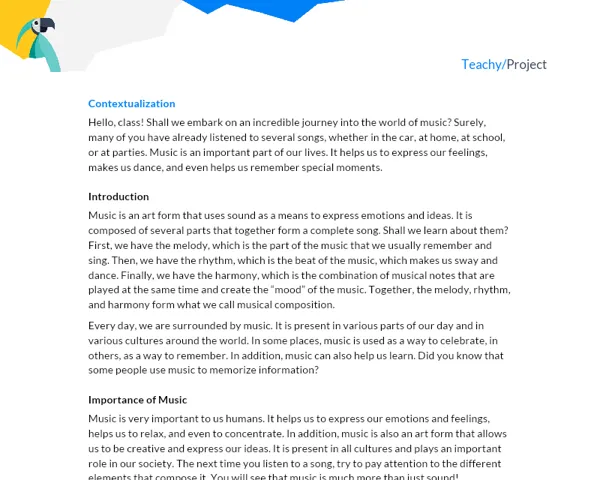Contextualization
The art of theater has been one of the most significant forms of expression throughout human history. Through it, it is possible to tell stories, evoke emotions, reflect on the human condition, communicate ideas, protest, and celebrate. The scenic art has the power to unite an audience in a shared experience.
In any theatrical production, there are months of preparation and collaboration behind the scenes among various people, from actors to directors, from costume designers to set designers. The theatrical production is an intricate and complex process that requires knowledge, skill, creativity, and a great deal of teamwork.
Therefore, understanding how a theatrical production is made is crucial for anyone who wants to work in the theater industry, but it is also interesting for those who simply appreciate this art. By learning about the processes behind a play, you gain a new appreciation for the final product.
Introduction
To understand theatrical production, we first need to understand what theater is. Theater is an art form that combines text, voice, movement, and visual elements to tell a story or express an idea. In a broader sense, theater can include any performance that takes place on a stage in front of an audience.
But theater is not just about what is in evidence on stage. Behind each performance, there is an immense amount of work involved. From the conception and writing of the play, through the casting, rehearsals, creation of sets and costumes, until the big day of the performance.
Therefore, by studying theatrical production, we will not only be looking at the final product, but also at the creative and collaborative process that takes place behind the scenes.
Theatrical production is a perfect example of a project that requires collaboration, creativity, planning, time management, and a series of other skills. With this project, we hope that you not only learn about the world of theater, but also about teamwork and project management.
To further deepen your knowledge on the subject, we recommend the book 'The Director's Craft' by Anne Bogart, and websites such as Teatro Sérgio Cardoso and Biblioteca Nacional Digital Brasil - both contain a vast array of resources on theater and theatrical production. In addition, YouTube videos from the channel Palco Vazio can be a great way to learn more about the processes of theatrical production in a visual and interactive way.
Practical Activity
Activity Title: Creating Our Own Theatrical Production
Project Objective
This project aims to put students in the role of a theatrical production team, where they will work together to create and execute their own play based on a script provided by the teacher.
Detailed Project Description
Students will be divided into groups of 3 to 5 people, and each group will be responsible for creating a mini theatrical production of approximately 15 minutes within a one-week deadline. Decisions should be made collectively, reflecting the teamwork and collaboration that is necessary in a real theatrical production.
Required Materials
- Script provided by the teacher.
- Various materials for building sets and costumes.
- Camera or smartphone for recording the performance.
Detailed Step-by-Step
-
Script Reading and Analysis: The first step in theatrical production is reading and understanding the script provided by the teacher. All group members should read the script and discuss the story, characters, and themes presented.
-
Task Division: Next, tasks need to be divided among group members. Who will be the director? Who will take care of the sets and costumes? Who will be the actors? Everyone should have a role in the production.
-
Preparation: This stage involves preparing the sets, costumes, and choosing locations, which can be any available space, preferably outdoors to ensure everyone's safety.
-
Rehearsals: Practice, practice, practice! It is important to rehearse several times to ensure that everyone is comfortable with the script and their respective roles.
-
Presentation: At the end of the week, each group must present their mini theatrical production, which should be filmed for later evaluation.
Project Deliverables
At the end of this journey, each group must deliver two items:
-
Video of the theatrical presentation: This is the final result of your teamwork and will be evaluated by the teacher.
-
Written document: In the form of a report, containing four main topics: Introduction, Development, Conclusions, and Bibliography used.
In the Introduction, contextualize the script, the relevance of theater in society, and the choices made for the production of the play.
In the Development, explain the process of producing the play, detailing the tasks of each group member, rehearsals, the creation of sets and costumes, among other relevant information about the process.
In the Conclusions, reflect on the project experience, indicating the lessons learned, the difficulties faced and how they were resolved, as well as conclusions regarding teamwork and the dynamics of producing a play.
In the Bibliography, indicate the sources that were used to understand the script and to produce the play, such as books, websites, videos, among others.

